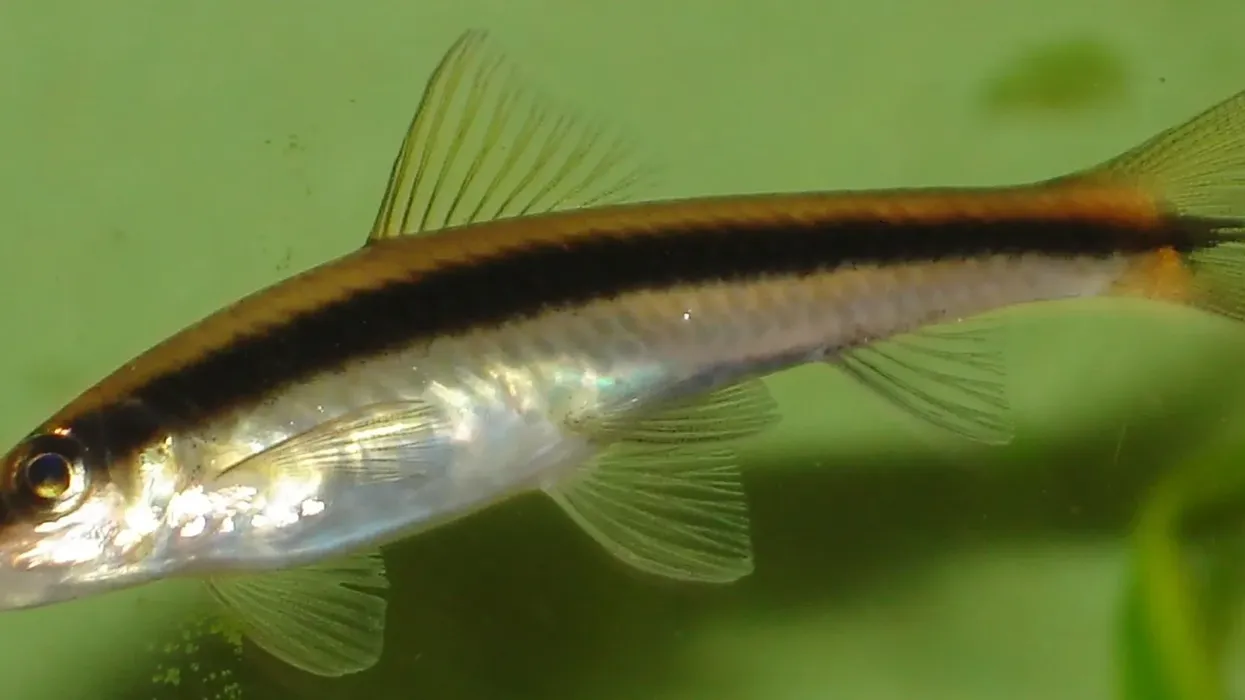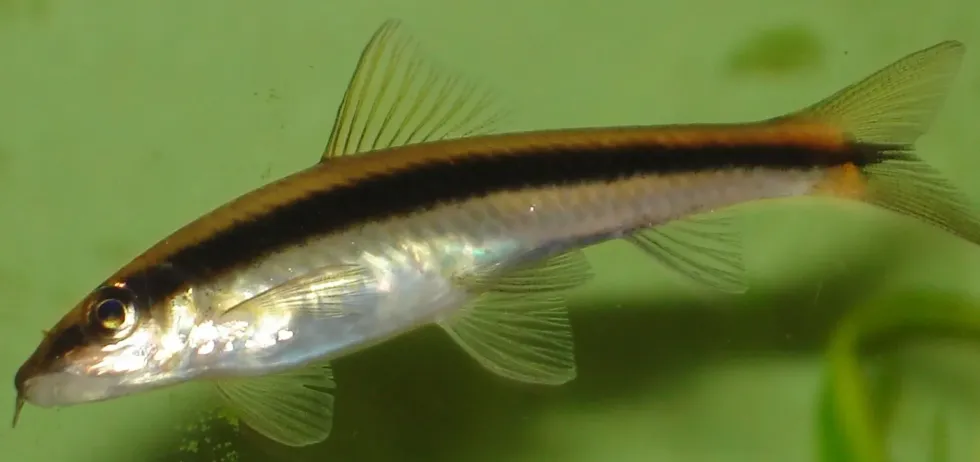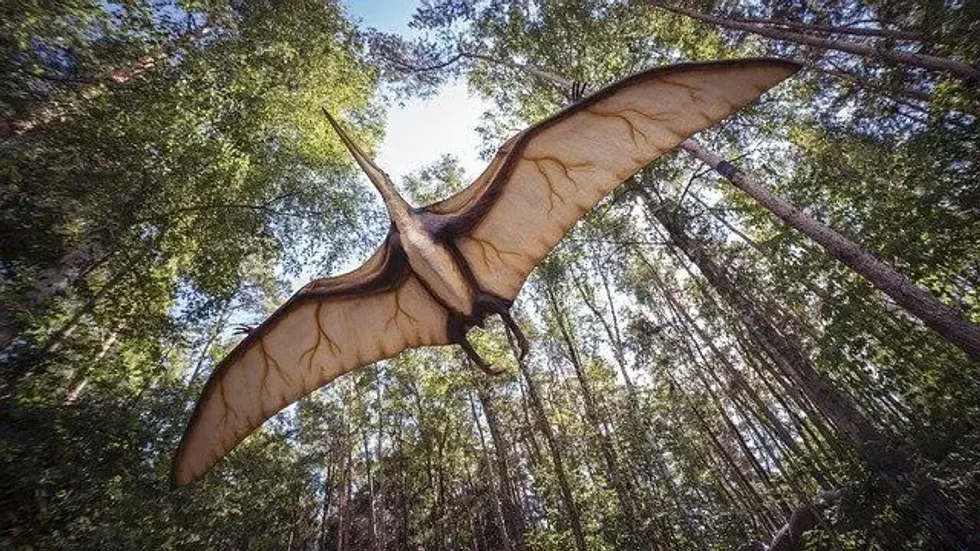The Siamese flying fox (Epalzeorhynchos kalopterus) belongs to the family Cyprinidae and is a freshwater fish species. It is found in the southeastern part of Asia but is quite common in captivity.
The natural habitat of the Siamese flying fox fish consists of densely planted freshwaters. Not much information is known about the breeding of the Siamese flying fox fish.
The body of this flying fox fish is known to be long and has a flat abdominal area. The color of the dorsal area is known to range from dark brown to olive.
The lower half of its body is known to have a yellow-whitish hue. A black-brownish line extends from the mouth and goes up to the caudal fin, and over this line, there is a stripe that is golden colored.
The foods of this species consist of algae but in captivity, its diet includes wafers, flakes, and tablets, and plant vegetables like zucchini, lettuce, and spinach, and live tubifex worms and crustaceans can be fed. They are quite common as pets.
The Siamese flying fox care and breeding are manageable. It requires a 40 gal (151.4 l) tank or sometimes a larger tank size with sand and gravel substrate and adequate water conditions.
Their tank mates can be angelfish, danios, barbs, acaras, and eartheaters, as this species can be aggressive or territorial sometimes. Hence, their aquarium or tank mates need to be chosen carefully and placed with less aggressive or peaceful fish.
This active fish is known to keep the tank clean. This species is quite commonly confused with the Siamese algae eater.
It is quite fascinating to learn about this fish and if you are interested, read about brook trout and pilchard, too.
Siamese Flying Fox Interesting Facts
What type of animal is a Siamese flying fox?
The siamese flying fox is a freshwater fish.
What class of animal does a Siamese flying fox belong to?
It belongs to the class of Actinopterygii or ray-finned fish.
How many Siamese flying foxes are there in the world?
There has been no specific count of the population of this fish estimated.
Where does a Siamese flying fox live?
These fish are found in Southeast Asia.
What is a Siamese flying fox's habitat?
The natural habitat of these fish is densely planted tropical freshwater.
Who do Siamese flying foxes live with?
Not much is known about these fish living in groups or alone.
How long does a Siamese flying fox live?
In the aquarium, this tropical fish species is known to live for about 8-10 years.
How do they reproduce?
Not much is extensively studied or researched about the reproduction of this species and thus, not much is available about the reproduction of this flying fox fish. Hence, we can not say for sure if these fish are livebearers or lay eggs.
What is their conservation status?
This fish species is placed under the Least Concern category of conservation status.
Siamese Flying Fox Fun Facts
What do Siamese flying foxes look like?
These fish are known to have a long body and an abdominal area that is flat. The color of the dorsal area is known to range from dark brown to olive.
The lower half of its body is known to have a yellow-whitish hue. A brown-black stripe extends from the mouth and goes up to the caudal fin and over this line, there is a stripe that is golden colored. They are known to have a reddish iris.
The dorsal, anal ventral fins are known to have a transparent front and a band that is thick on the edge. Males of this species are known to be slender, whereas, females are plumper.

*Please note that this is an image of a Siamese algae eater, not a Siamese flying fox. If you have an image of a Siamese flying fox, please let us know at hello@kidadl.com.
How cute are they?
These fish are considered cute because of their size.
How do they communicate?
Just like other fish species, these fish also communicate by using tactile and chemical cues.
How big is a Siamese flying fox?
The Siamese flying fox size is known to be 4.7 in (12 cm) and they are known to reach up to 6 in (15 cm) in length. These fish are quite smaller than the blobfish and extremely small than the bonito fish.
How fast can a Siamese flying fox swim?
The exact speed of this fish species is unknown.
How much does a Siamese flying fox weigh?
The weight of these fish is unknown.
What are the male and female names of the species?
Males and females of this species do not have any specific names assigned.
What would you call a baby Siamese flying fox?
In general, they are referred to as young ones or juveniles, but there are no assigned names for the babies of this species.
What do they eat?
The Siamese flying fox diet mainly consists of algae but in captivity, this fish can be fed fish food like wafers, flakes, and tablets, and plant vegetables like zucchini, lettuce, and spinach, and live tubifex worms and crustaceans.
Are they dangerous?
These fish are not considered dangerous.
Would they make a good pet?
These tropical fish are common as pets and require 40 gal (151 l) or larger tank size or aquarium. The tank or aquarium should be filled with sand or gravel substrate.
The pH level or the water conditions of the aquarium can range from 6-7.5. These fish can be kept with angelfish, barbs, acaras, danios, knife fish, loaches, eartheaters, and rasboras in a tank or an aquarium.
A group of flying foxes tends to become territorial in the aquarium or tank.
Food can be normal food for fish and live worms. These fish are known to be a good addition to the tank or aquarium as they are active algae-eaters and keeps the tank or aquarium clean, just like the Siamese algae eater.
Did you know...
This active algae eater species is also known to be similar to the false flying fox.
All species of flying foxes are known to be aggressive and territorial sometimes, but this flying fox fish is known to be an attractive and a great community fish.
Flying fox does not eat other fish.
These active tropical species do not eat red algae.
What is the difference between a Siamese flying fox and a Siamese algae eater?
Often this fish is confused with Siamese algae eater (Crossocheilus oblongus or Crossocheilus siamensis) but there are certain natural differences between the two. To differentiate between flying fox or Siamese algae eater, look for the mouth structure, as the mouth structure of both species is different.
The corner of the flying foxes' mouth has a fleshy flap and this is absent in the Siamese algae eater.
The stripe present on the flying fox is known to be straight, whereas, the Siamese algae eater (Crossocheilus siamensis) has a zig-zag edge.
The color on the back of the flying fox is clean and uniform, whereas, the algae eater has different shades and darker outlines on the scales. One of the similarities is that both Siamese algae eater and Siamese flying fish keep the aquarium or tank clean by frequently cleaning it.
What adaptations do Siamese flying foxes have?
Not much information is available about the adaptations of Siamese flying foxes.
Here at Kidadl, we have carefully created lots of interesting family-friendly animal facts for everyone to discover! For more relatable content, check out these Arctic char facts and koi facts pages.
You can even occupy yourself at home by coloring in one of our free printable Siamese flying fox coloring pages.
*Please note that this is an image of a Siamese algae eater, not a Siamese flying fox. If you have an image of a Siamese flying fox, please let us know at hello@kidadl.com.










